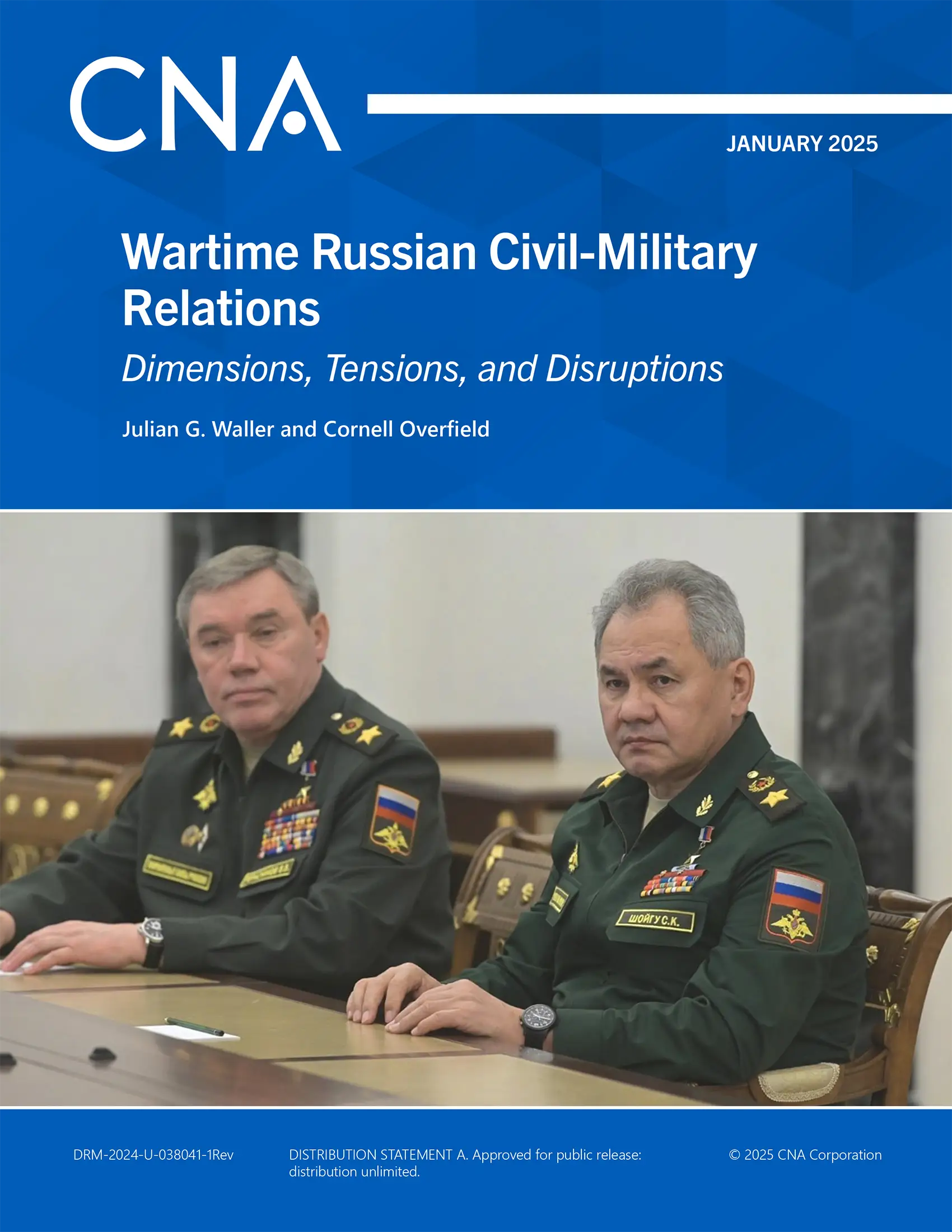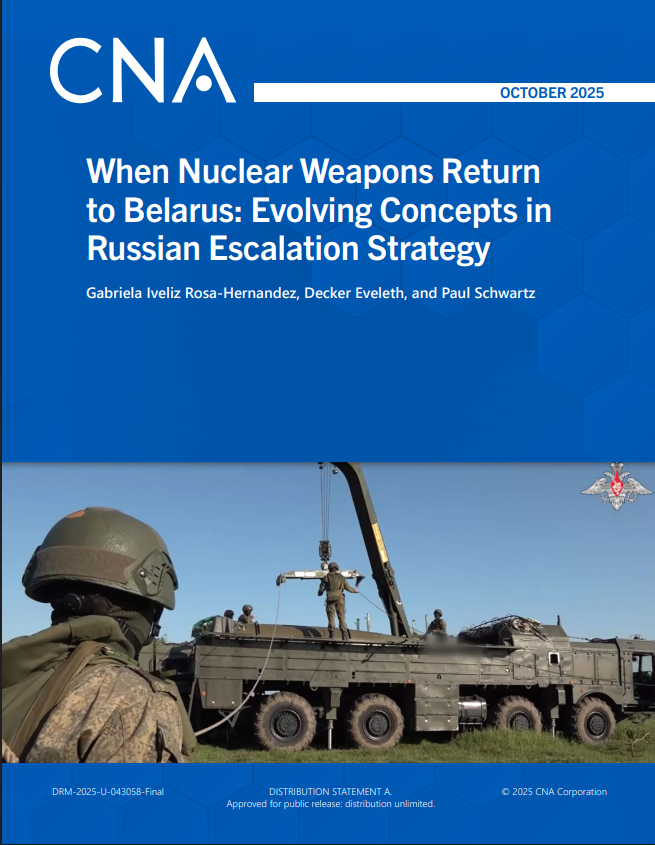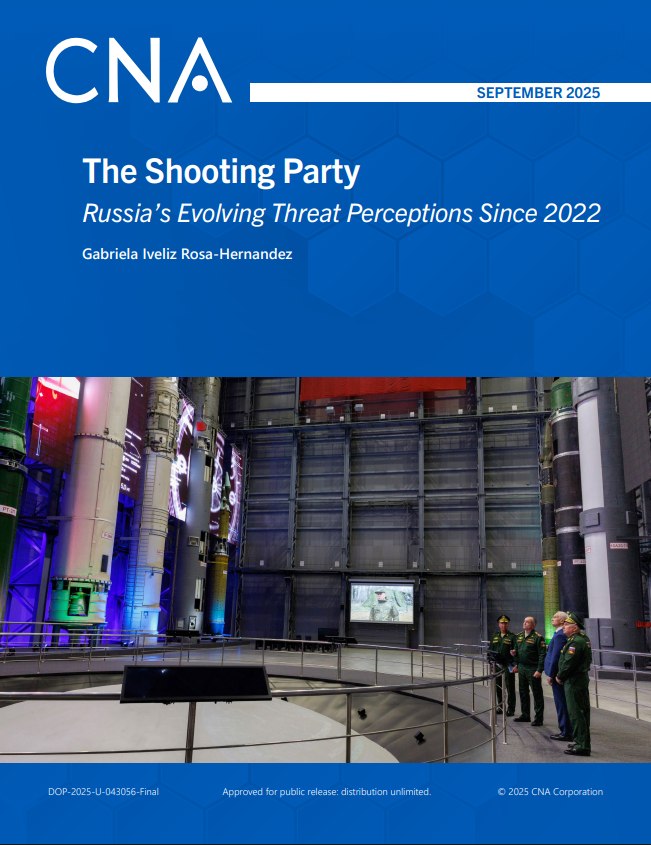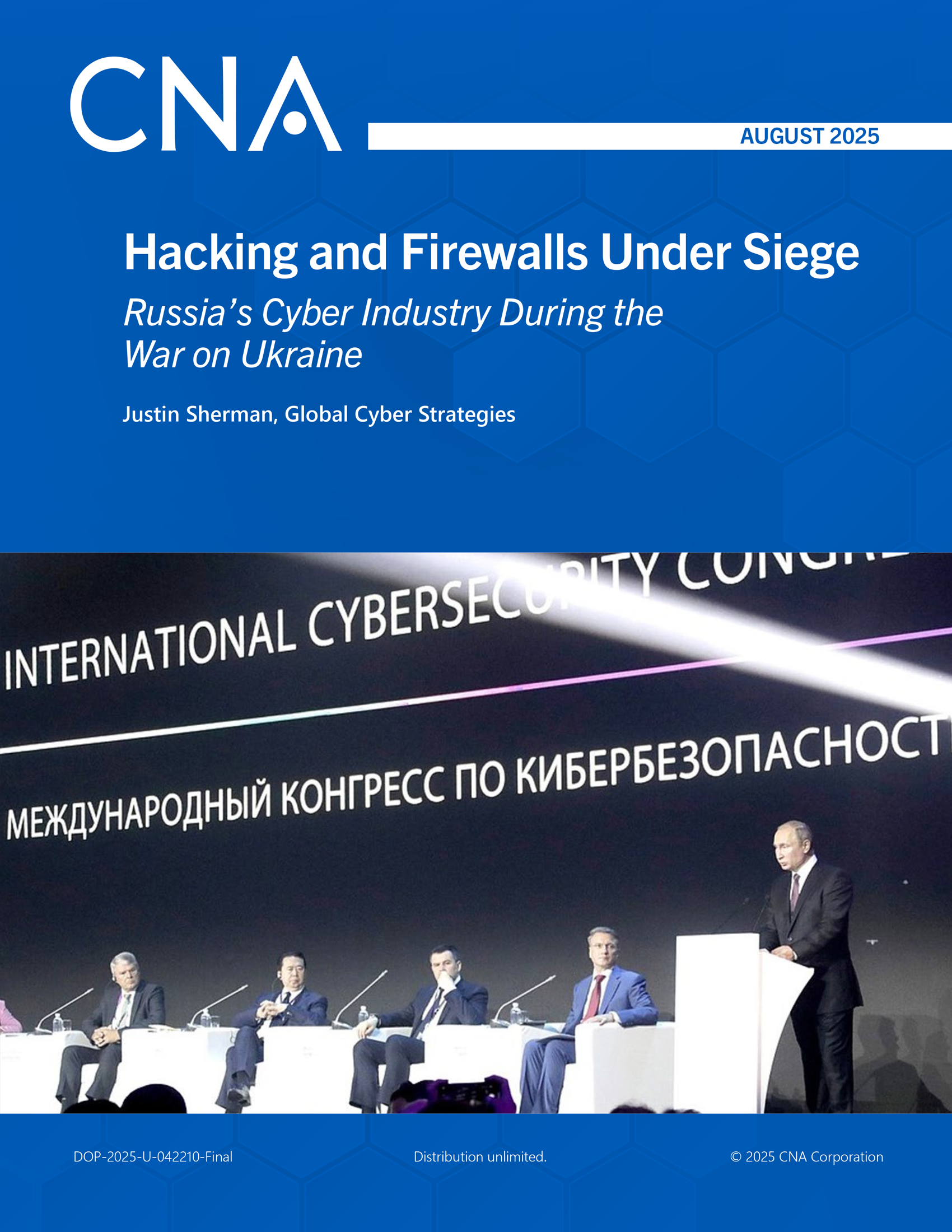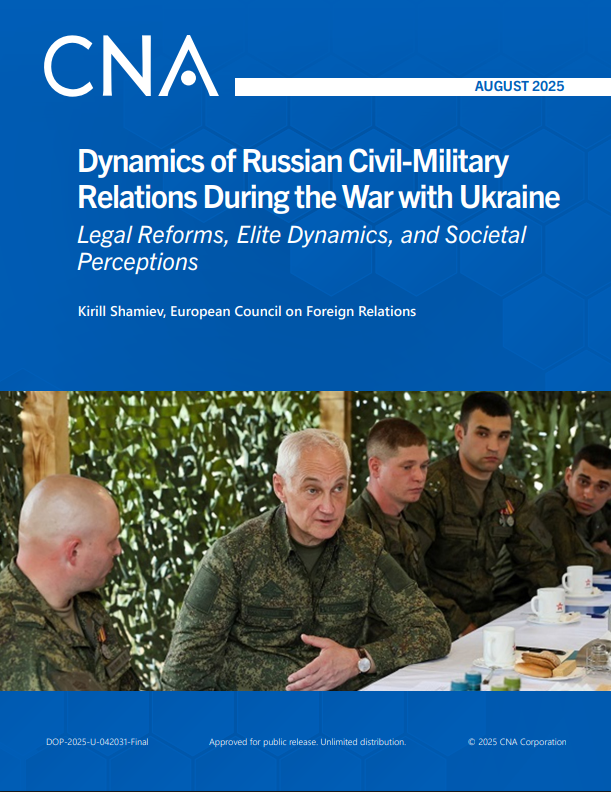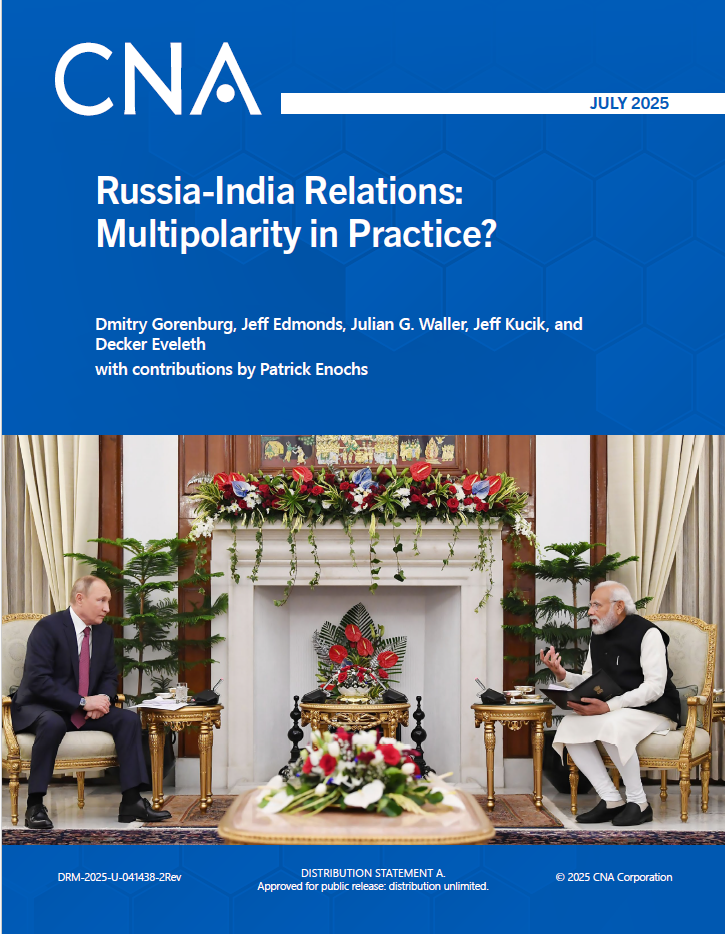Wartime Russian Civil-Military Relations
Executive Summary
This report examines Russian civil-military relations by focusing on high-level tensions between Russian political and military elites that have arisen since the start of the ongoing Russia-Ukraine war. To do so, the report employs a conceptual framework that breaks out interrelated dimensions of control, authority, hierarchy, institutionalization, and autonomy relevant to the broader Russian civil-military relationship. Across these dimensions, Russia has experienced stresses, frictions, and uncertainties at differing levels of severity since the war’s onset. These have strained Russian civil-military relations, and even briefly disrupted Russia’s political order, during the wartime period of February 2022 through the first half of 2024.
These tensions are observable across multiple dimensions of the Russian military’s relationship with civilian authorities. First, the military leadership by the Ministry of Defense (MOD) and the General Staff of the Russian Armed Forces has been targeted for hostile oversight by a growing and influential media ecosystem of “war correspondents,” who have partially undermined military elite legitimacy in the eyes of many regime loyalists. Second, the Kremlin, reacting to battlefield reverses, has interfered with stable military leadership and personnel choices over the course of the war, resulting in the potential for bad blood and creating uncertainty across the military-bureaucratic leadership cohort. Third, the Russian regime itself has been destabilized by hostile relations between the military hierarchy and powerful, irregular military organizations, principally the Wagner Group private military company (PMC), ultimately leading to the rebellion of its leader Evgeny Prigozhin in June 2023.
Key findings, insights, and recommendations
First, the war in Ukraine has led to an unprecedented disruption in Russian civil-military relations. The events of the first two years of the war are likely to have considerable downstream effects on Russia’s Armed Forces, including its ability to project power, organize its own internal affairs, and maintain its established place in the Russian political system. The downstream effects of consistently strained civil-military tensions also could increase the risk of escalation between Russia and its adversaries, including the United States and NATO, depending on the state of Russian domestic politics and whether the balance between civilian and military elements shifts in destabilizing ways.
Second, the rise of “political-military barons,” the politically influential leaders of irregular armed groups with direct, patronage connections to regime decision-makers, has disrupted the standard hierarchy of decision-making and command authority within the Russian Armed Forces. The most prominent baron, PMC Wagner leader Evgeny Prigozhin, developed a power base that was distinct from other irregular military organizations and ultimately engaged in a high-stakes (and ultimately failed) rebellion that further disrupted civil-military relations. In the wake of this event, Russian political elites have been forced to focus on core questions of regime maintenance and stability vis-à-vis the military, leading to potential uncertainty and greater pressure on Russia’s cohort of general officers below the most senior leadership level.
Third, political-military instability (characterized by, for example, the threat of regime change, general/flag-level officer purges, and the use of reactive mechanisms to reestablish control and hierarchy within the armed forces) will likely increase institutional sclerosis by entrenching existing internal bureaucratic hierarchies. Achieving adaptable and flexible decision-making within the Russian Armed Forces will be made more difficult by a renewed perception of the necessity of continued political oversight. This difficulty will likely affect force effectiveness, capacity, and the relative autonomy of military actors over the medium and long term. Kremlin fears about maintaining civilian control will remain a core focus point, and the regime will struggle to balance military-bureaucratic and elite stability with competing desires for military effectiveness, internal autonomy, and incentives for innovation. This need for oversight and control may also interact in uncertain ways with the further “securitization” of the Russian upper-tier elite and within the Kremlin itself as the Russian regime continues its shift towards more fully closed authoritarian politics.
Fourth, civil-military tensions may reorient Russia’s political leadership toward suboptimal reform efforts, focusing on maintaining and stabilizing the regime, coup-proofing, and ensuring officer loyalty. This may undermine the effectiveness and thoroughness of post-war medium- and long-term reform efforts for the Russian Armed Forces, including the constant pressure to avoid lopsided investments across Russian military service branches. Instead, Russia’s focus will likely remain primarily on the Russian Ground Forces and, to a lesser extent, the Aerospace Forces, which have conducted the bulk of the fighting in Ukraine and also have been the central locus for ongoing civil-military tensions.
Fifth, continued political instability in Russia resulting from civil-military issues may also increase the risk of a decisive “cleaning house” reform event that may decrease (in the short to medium term) or possibly increase (in the medium to long term) the ability of the Russian Armed Forces to conduct and sustain a future regional conflict in Eastern Europe. Efforts to ensure political control—or otherwise shake up the cadre of military leadership elites—will have negative immediate effects on cohesiveness and morale but may improve the quality of leadership in time.
Sixth, the role of certain political institutions, such as the Russian Security Council, remains relatively underemphasized in current research on the Russian military. Further studies on the Russian Security Council’s makeup and interaction with other core institutions, especially the Presidential Administration, the MOD, the General Staff, and the Federal Security Service (FSB), will likely provide new insights into how political and military leadership actors interact with each other, as well as how they coordinate—or fail to—during periods of crisis and as military events unfold.
Lastly, the Russian Armed Forces represent a core case of civilian control in a large, authoritarian regime with a highly institutionalized and powerful military. As major warfare conducted by such states is relatively rarely observed, the Russian case remains an important opportunity to see how such a system engages with, and is in turn influenced by, the experience of prolonged, high-casualty warfighting. The Russian case of wartime civil-military relations should be both juxtaposed with other such systems such as China and compared to less fully controlled systems—as in sub-Saharan Africa and the Middle East—to provide new insights into the systematic understanding of 21st-century civil-military relations in nondemocracies.
Download reportApproved for public release: distribution unlimited.
Details
- Pages: 70
- Document Number: DRM-2024-U-038041-1Rev
- Publication Date: 2/3/2025
